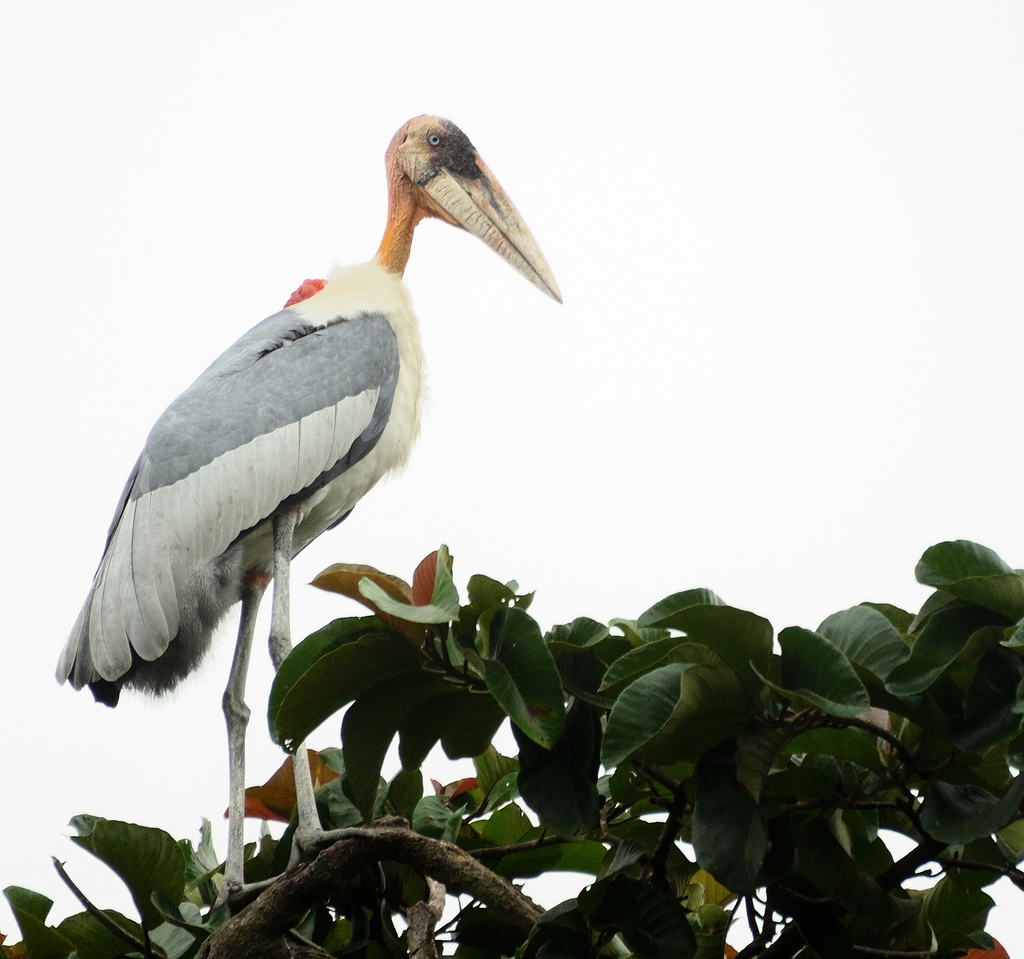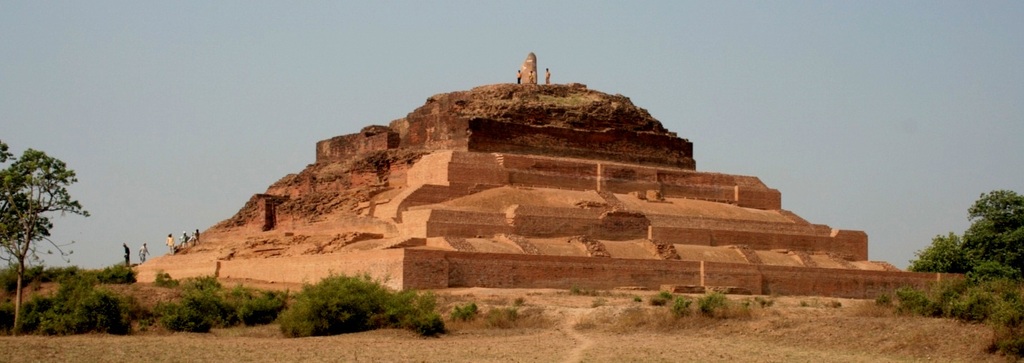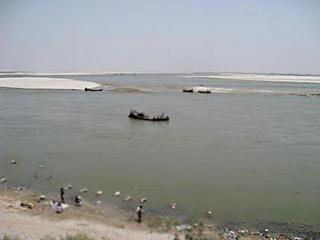|
Anga
Anga was an ancient Indo-Aryan peoples, Indo-Aryan tribe of eastern South Asia whose existence is attested during the Iron Age in India, Iron Age. The members of the Aṅga tribe were called the Āṅgeyas. Counted among the "sixteen great nations" in Buddhist texts like the Anguttara Nikaya, Aṅga also finds mention in the Jain Vyakhyaprajnapti's list of ancient janapadas. Location Aṅga proper was located between the Chandan River, Champā river to the west and the Rajmahal hills to the east. However, at times, its territories did extend to the sea in the south, or included Magadha (Mahajanapada), Magadha in the west. The capital of Aṅga, named Campā, was located at the confluence of the Campā and Ganges, Gaṅgā rivers, and corresponds to the modern-day area of Champapuri, Campāpurī and Champanagar in Bhagalpur the eastern part of the Indian state of Bihar, Bihār. According to the Jataka tales, s, Campā was also called Kāla-Campā, while Puranas, Puranic texts ... [...More Info...] [...Related Items...] OR: [Wikipedia] [Google] [Baidu] |
Vanga Kingdom
Vaṅga was an ancient kingdom and geopolitical division within the Ganges delta in the Indian subcontinent. The kingdom is one of the namesakes of the Bengal region. It was located in eastern and southern Bengal. Vanga features prominently in the epics and tales of ancient India as well as in the history of Sri Lanka. Vanga was probably the centre of the Gangaridai Empire mentioned by numerous Greco-Roman writers. The exact capital of ancient Vanga kingdom could not be identified. After the rule of the Gupta Empire, ancient Bengal was divided into two independent kingdoms – Gauda kingdom, Gauda and Vanga. Kotalipara Upazila, Kotalipara, an ancient fortified city of independent Vanga kingdom, present-day in Gopalganj District, Bangladesh, Gopalganj district of Dhaka division, emerged as the centre of administration of Vanga kings after Gupta kingdom, Gupta period. Vanga was probably the centre of the Gangaridai Empire mentioned by numerous Greco-Roman writers.Indian and Gre ... [...More Info...] [...Related Items...] OR: [Wikipedia] [Google] [Baidu] |
Brahmadatta Of Anga
Brahmadatta of Anga (6th century BCE) was an ancient Indian King of Anga. Life Brahmadatta was older contemporary to Bimbisara of Magadha. He defeated Bhatiya, father of Bimbisara. After ascending to the throne of Magadha, Bimbisara avenged his father's defeat and killed Brahmadatta. The campaign was successful, Anga was annexed, and prince Kunika (Ajatashatru) was appointed governor at Champa. See also *Bimbisara *Anga Anga was an ancient Indo-Aryan peoples, Indo-Aryan tribe of eastern South Asia whose existence is attested during the Iron Age in India, Iron Age. The members of the Aṅga tribe were called the Āṅgeyas. Counted among the "sixteen great na ... References 6th-century BC Indian monarchs Kings of Anga {{India-royal-stub ... [...More Info...] [...Related Items...] OR: [Wikipedia] [Google] [Baidu] |
Bhagalpur
Bhagalpur, historically known as Champapuri, Champa Nagari, is a city in the Indian state of Bihar, situated on the southern bank of the Ganges river. It is the Bihar#Government and administration, third largest city of Bihar by population and also serves the headquarters of Bhagalpur district, Bhagalpur division, and Bihar Police, Eastern Range. It is known as the Bhagalpuri silk, Silk City and also listed for development under the Smart Cities Mission by Government of India. It is the only district in Bihar after capital city Patna where three major higher educational institutions Indian Institute of Information Technology, Bhagalpur, IIIT Bhagalpur, Jawaharlal Nehru Medical College, Bhagalpur, Jawaharlal Nehru Medical College, Tilka Manjhi Bhagalpur University, TMBU, and Bihar Agricultural University, Agriculture University (BAU) are located and also Vikramshila, Vikramshila Central University is under construction next to the ruins of the medieval Vikramshila, Vikramshila Mah ... [...More Info...] [...Related Items...] OR: [Wikipedia] [Google] [Baidu] |
Janapadas
The Janapadas () () (c. 1100–600 BCE) were the realms, republics (ganapada) and kingdoms (sāmarājya) of the Vedic period in the Indian subcontinent. The Vedic period reaches from the late Bronze Age into the Iron Age: from about 1500 BCE to the 6th century BCE. With the rise of sixteen ''Mahajanapadas'' ("great janapadas"), most of the states were annexed by more powerful neighbours, although some remained independent. Etymology The Sanskrit term ''janapada'' is a tatpurusha compound term, composed of two words: ''jana'' and ''padna''. ''Jana'' means "person" or "people" (cf. Latin cognate ''genus'', English cognate ''kin''). The word ''pada'' means "foot" (cf. Latin cognate ''pedis''); from its earliest attestation, the word has had a double meaning of "realm, territory" and "subject population" (cf. Hittite ''pedan'', "place"). Linguist George Dunkel compares the Greek ''andrapodon'' "slave", to PIE "fetters" (i.e. "what is attached to the feet"). Sanskrit ''padá ... [...More Info...] [...Related Items...] OR: [Wikipedia] [Google] [Baidu] |
Munger
Munger, formerly spelt as Monghyr, is a twin city and a Municipal Corporation situated in the Indian state of Bihar. It is the administrative headquarters of Munger district and Munger Division. Munger was one of the major cities in Eastern India and undivided Bengal during Mughal period and British Raj. It is one of the major political, cultural, educational and commercial centers of Bihar and Eastern India. Munger is situated about 180km east of capital city Patna, about 480km west of Eastern India's largest city Kolkata and 1200km from country's capital New Delhi. Historically, Munger is known for being an ancient seat of rule. The twin city comprises Munger and Jamalpur situated on the southern bank of the river Ganges. It is situated 8 km from Jamalpur Junction, 180 km east of capital city Patna and 430 Km from Kolkata the capital of West Bengal. Munger is said to have been founded by the Guptas (4th century CE) and contains a fort that houses the to ... [...More Info...] [...Related Items...] OR: [Wikipedia] [Google] [Baidu] |
Chandan River
The Chandan River also known as Chanan River flows in the districts of Munger, Bhagalpur and Banka in the state of Bihar, and Deoghar in the state of Jharkhand, India. It has been identified as probably being the river ''Champa'' on whose banks was located the ancient city of Champa, capital of the Anga Mahajanapada. It would have then also been a border between Anga and its neighbour, Magadha Magadha was a region and kingdom in ancient India, based in the eastern Ganges Plain. It was one of the sixteen Mahajanapadas during the Second Urbanization period. The region was ruled by several dynasties, which overshadowed, conquered, and .... References Rivers of Bihar {{Bihar-geo-stub ... [...More Info...] [...Related Items...] OR: [Wikipedia] [Google] [Baidu] |
Magadha (Mahajanapada)
Magadha was a region and kingdom in ancient India, based in the eastern Ganges Plain. It was one of the sixteen Mahajanapadas during the Second Urbanization period. The region was ruled by several dynasties, which overshadowed, conquered, and incorporated the other Mahajanapadas. Magadha played an important role in the development of Jainism and Buddhism and formed the core of the Maurya Empire (ca. 320–185 BCE). Geography The territory of the Magadha kingdom proper before its expansion was bounded to the north, west, and east respectively by the Gaṅgā, Son, and Campā rivers, and the eastern spurs of the Vindhya mountains formed its southern border. The territory of the initial Magadha kingdom thus corresponded to the modern-day Patna and Gaya districts of the Indian state of Bihar. The region of Greater Magadha also included neighbouring regions in the eastern Gangetic plains and had a distinct culture and belief. History Vedic period (semi-legendary) (ca. 170 ... [...More Info...] [...Related Items...] OR: [Wikipedia] [Google] [Baidu] |
Champapuri
Champapuri, Champa Nagri or Champanagar is a neighbourhood in Bhagalpur in the Indian state of Bihar. It is the site of the ancient city of Champa, the capital of the Anga Mahajanapada. It is also the main centre of capital of cultural region of Anga. Champapuri is claimed to be the only place where all the five kalyanas- garbha, janma, diksha, kevalagnana and moksha kalyana of Bhagwan Vasupujya took place. It is said that Bhagawan Adinatha, Bhagwan Parshwanatha and Bhagawan Mahavira had their monsoon stay at this place. Bhagawan Mahavira had his third and twelfth monsoon stay at this place. There is an idol of Bhagavan at the temple. An ancient temple of Champanala is seen at this place. Significance Champapuri is also believed to be birthplace of Vasupujya, the twelfth tirthankara. Teerthankara Adinath divided the country into 52 Janapadas; of these one was Anga and its capital was The chief pupil - Pattadhara of Tirthankara Mahavir Sudharmaswami and Jambus ... [...More Info...] [...Related Items...] OR: [Wikipedia] [Google] [Baidu] |
Vajjika League
The Vajjika (Pāli: ) or Vrijika () League, Confederacy, or Sangha, also called simply Vajji (Pāli: ) or Vriji (), was an ancient Indo-Aryan league which existed during the later Iron Age period in the north-eastern Indian subcontinent. Name The Vajjika League was named after one of its constituent tribes, the Vajjikas proper, who had once been the most powerful tribe in the region of the league's capital of Vesālī. According to Chinese pilgrim Xuanzang, the name , meaning "united Vajjis," was given by the peoples of northern South Asia to the Vajjika League. The larger region of the former Mahā-Videha kingdom in which the Vajjika League was located was in turn named after the confederacy. Constituent tribes The Vajjika League was a league of republican tribal states under the leadership of the Licchavikas centred around the city of Vesālī. The other members of the league were the Vaidehas in the Mithila region, the Nāyikas (Skt. *Jñātrika) of Kuṇḍapura, a ... [...More Info...] [...Related Items...] OR: [Wikipedia] [Google] [Baidu] |
Mahabharata
The ''Mahābhārata'' ( ; , , ) is one of the two major Sanskrit Indian epic poetry, epics of ancient India revered as Smriti texts in Hinduism, the other being the ''Ramayana, Rāmāyaṇa''. It narrates the events and aftermath of the Kurukshetra War, a war of succession between two groups of princely cousins, the Kauravas and the Pandava, Pāṇḍavas. It also contains Hindu philosophy, philosophical and devotional material, such as a discussion of the four "goals of life" or ''puruṣārtha'' (12.161). Among the principal works and stories in the ''Mahābhārata'' are the ''Bhagavad Gita'', the story of Damayanti, the story of Shakuntala, the story of Pururava and Urvashi, the story of Savitri and Satyavan, the story of Kacha (sage), Kacha and Devayani, the story of Rishyasringa and an Ramopakhyana, abbreviated version of the ''Rāmāyaṇa'', often considered as works in their own right. Traditionally, the authorship of the ''Mahābhārata'' is attributed to Vyasa, Vy ... [...More Info...] [...Related Items...] OR: [Wikipedia] [Google] [Baidu] |
Malinipuri
Malinipuri, also called Malini, is a city mentioned in the Sanskrit epic, the Bhagavad Gita. The city was given to Karna, a warrior and tragic hero of the epic, by Jarasandha, king of Magadha. Karna had sought out weapons instructions but was denied due to his mixed-caste background. He had helped Duryodhana Duryodhana (, Help:IPA/Sanskrit, ̪ʊɾjoːd̪ʱən̪ᵊ ), also known as Suyodhana, is the primary antagonist in the Hindu epic ''Mahabharata.'' He is the eldest of the Kaurava, Kauravas, the hundred sons of King Dhritarashtra and Queen Gan ... abduct the princess of Kalinga and fought off all the other kings while doing so, including Jarasandha. After this, Jarasandha wanted to test Karna's strength and challenged him to a wrestling match. Karna "ruptured the seam" that held together Jarasandha's body, defeating him, and was given the city of Malini. After this he became "king of the Angas"; it is presumed that Duryodhana elevated Karna to the Anga throne following the ... [...More Info...] [...Related Items...] OR: [Wikipedia] [Google] [Baidu] |
Bihar
Bihar ( ) is a states and union territories of India, state in Eastern India. It is the list of states and union territories of India by population, second largest state by population, the List of states and union territories of India by area, 12th largest by area, and the List of Indian states and union territories by GDP, 14th largest by GDP in 2024. Bihar borders Uttar Pradesh to its west, Nepal to the north, the northern part of West Bengal to the east, and Jharkhand to the south. Bihar is split by the river Ganges, which flows from west to east. On 15 November 2000, a large chunk of southern Bihar was ceded to form the new state of Jharkhand. Around 11.27% of Bihar's population live in urban areas as per a 2020 report. Additionally, almost 58% of Bihari people, Biharis are below the age of 25, giving Bihar the highest proportion of young people of any Indian state. The official language is Hindi, which shares official status alongside that of Urdu. The main native languag ... [...More Info...] [...Related Items...] OR: [Wikipedia] [Google] [Baidu] |







